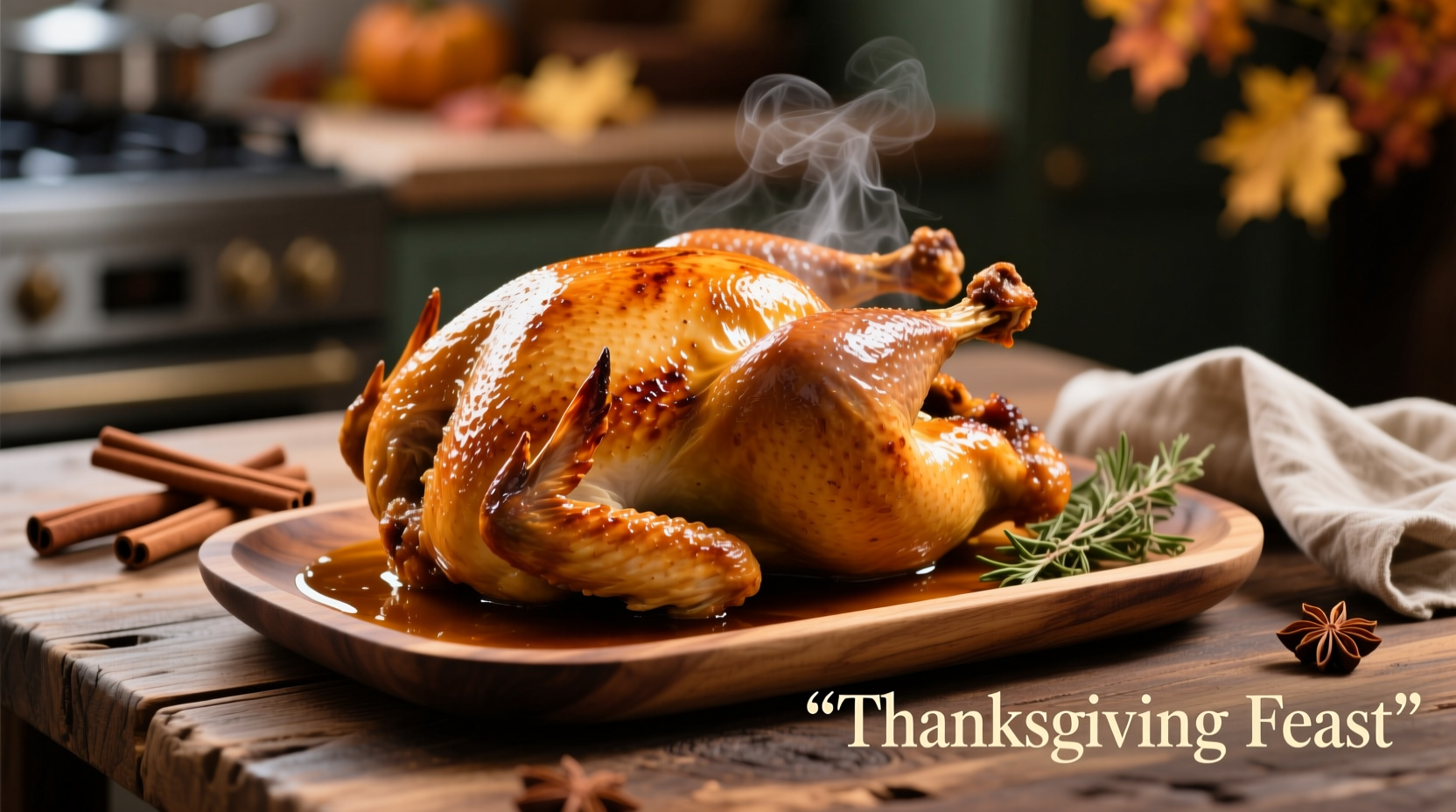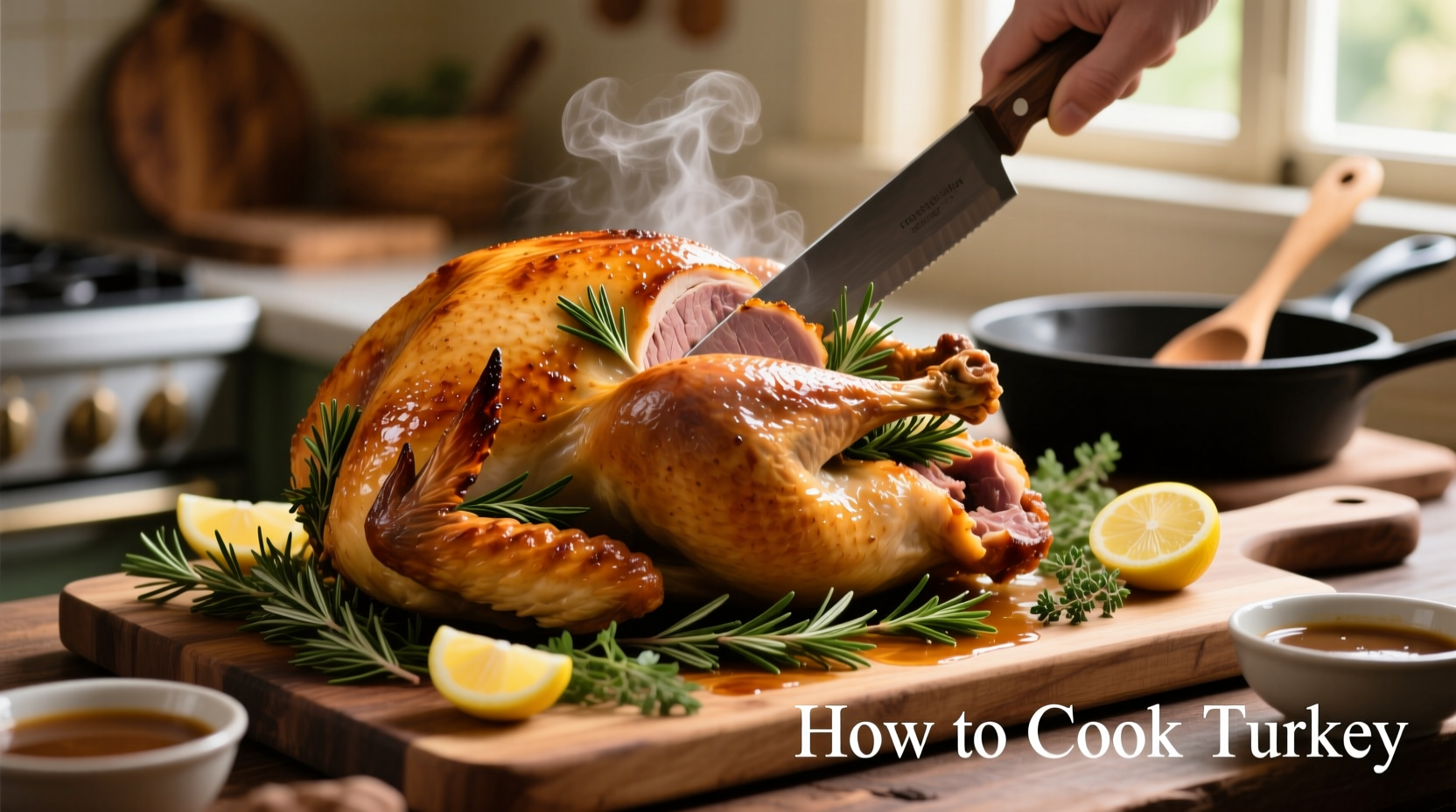Here's exactly what you need to know to cook a perfect turkey: Roast at 325°F (165°C) for 13 minutes per pound for an unstuffed bird. The turkey is safely cooked when the thickest part of the breast reaches 165°F (74°C) and the inner thigh reaches 175°F (80°C). Always allow 20-30 minutes of resting time before carving to retain juices. For a 12-14 pound turkey, expect approximately 2.5-3 hours of cooking time.
Your Step-by-Step Path to Perfect Roast Turkey
Nothing says celebration quite like a beautifully roasted turkey, but many home cooks struggle with dry meat, uneven cooking, or food safety concerns. This comprehensive guide cuts through the confusion with science-backed techniques that guarantee moist, flavorful results while keeping your meal safe. Whether you're preparing your first holiday feast or refining your technique after years of experience, these professional methods will transform your turkey cooking process.
Planning Your Turkey Timeline (3-4 Days Before)
Successful turkey cooking begins long before it hits the oven. Proper planning prevents last-minute stress and ensures optimal results. The USDA Food Safety and Inspection Service recommends allowing approximately 24 hours of refrigerator thawing time for every 4-5 pounds of turkey. For a standard 12-14 pound bird, that means starting the thawing process 3-4 days before cooking.
Consider these planning options based on your schedule:
- Cold water thawing: Submerge wrapped turkey in cold water, changing water every 30 minutes (30 minutes per pound)
- Refrigerator thawing: Place turkey on a tray in the refrigerator (24 hours per 4-5 pounds)
- Fresh turkey option: Purchase 1-2 days before cooking to avoid thawing altogether
Never thaw turkey at room temperature, as this creates ideal conditions for bacterial growth in the "danger zone" between 40°F and 140°F (4°C-60°C).
Preparation: Brining and Seasoning Secrets
Brining significantly improves moisture retention and flavor penetration. America's Test Kitchen research shows properly brined turkey retains up to 20% more moisture than unbrined birds. Choose between these two proven methods:
| Brining Method | Ratio | Time | Best For |
|---|---|---|---|
| Wet Brine | 1 cup salt + 1 cup sugar per gallon water | 12-18 hours | Standard ovens, beginners |
| Dry Brine | 1 tablespoon kosher salt per 5 pounds turkey | 24-48 hours | Crispier skin, convection ovens |
After brining, pat the turkey completely dry with paper towels. This critical step ensures proper browning and crisp skin. Season generously with freshly ground black pepper and your choice of herbs. For authentic flavor development, rub softened butter under the skin between the meat and skin layer—a technique professional chefs use to protect breast meat from drying out.

Cooking: Temperature Control and Monitoring
Temperature management makes or breaks your turkey. Modern food science has evolved beyond the old "pierce the thigh to check" method. Instead, use an accurate instant-read thermometer to monitor progress:
- Insert thermometer into the thickest part of the breast, avoiding bone
- Check the inner thigh temperature periodically
- Remove turkey from oven when breast reaches 160°F (71°C)
During cooking, resist the urge to open the oven frequently. Each peek drops the oven temperature by 25-50°F, extending cooking time and potentially drying out the meat. If you choose to baste, do so quickly and only during the last hour of cooking. Better yet, tent the breast with foil when it reaches 140°F (60°C) to prevent overcooking while the darker meat finishes.
Resting and Carving: The Critical Final Steps
Many cooks ruin perfectly roasted turkey by carving too soon. Resting allows juices to redistribute throughout the meat. The FDA Food Code specifies that poultry should rest for at least 3 minutes after cooking, but for optimal results with turkey, follow this professional guideline:
- Cover loosely with foil and let rest 20-30 minutes for birds under 14 pounds
- Allow 30-40 minutes for turkeys 14-20 pounds
- Place turkey on a carving board with a moat to catch juices for gravy
When carving, start with the breast meat while it's still warm but not hot. Use a sharp carving knife and follow the natural seams of the bird. Proper carving technique ensures clean slices without shredding the delicate meat.
Troubleshooting Common Turkey Problems
Even with careful planning, issues can arise. Here's how to handle frequent challenges:
- Dry breast meat: Next time, try butterflying the turkey or using a remote thermometer alarm
- Undercooked dark meat: Tent breast with foil earlier or separate legs for final cooking
- Burnt skin: Lower oven temperature by 25°F and check frequently during final hour
- Overcooked turkey: Make extra gravy and serve with cranberry sauce to add moisture
Remember that carryover cooking raises the internal temperature 5-10°F during resting. This explains why you remove the turkey at 160°F rather than the final safe temperature of 165°F.
Traditional vs. Modern Turkey Cooking Methods Timeline
Cooking techniques have evolved significantly over the decades. Understanding this progression helps you choose the best approach for your needs:
- 1950s-1970s: High-heat roasting (400°F+) for short periods, often resulting in dry meat
- 1980s-1990s: Standardized 325°F roasting with frequent basting (less effective than believed)
- 2000s: Introduction of probe thermometers and understanding of carryover cooking
- 2010s-present: Precision temperature control, dry brining popularity, and sous vide options
Today's best practices combine traditional roasting with modern food science for consistently excellent results.
When to Use Special Techniques: Context Matters
Not all turkey cooking methods work equally well in every situation. Consider these context boundaries when choosing your approach:
- Small kitchen oven: Avoid convection cooking with multiple dishes—use standard roasting
- High humidity environment: Dry brining outperforms wet brining for crispier skin
- Time-constrained cooking: Spatchcocking reduces cooking time by 30-40% for faster meals
- Large gatherings: Consider cooking turkey parts separately for more consistent results
The USDA Food Safety and Inspection Service emphasizes that regardless of method, the critical factor remains achieving proper internal temperatures to ensure food safety. Their guidelines state: "Use a food thermometer to verify the turkey has reached a safe minimum internal temperature of 165°F (73.9°C)." You can verify this information directly on the USDA FSIS poultry safety page.











 浙公网安备
33010002000092号
浙公网安备
33010002000092号 浙B2-20120091-4
浙B2-20120091-4